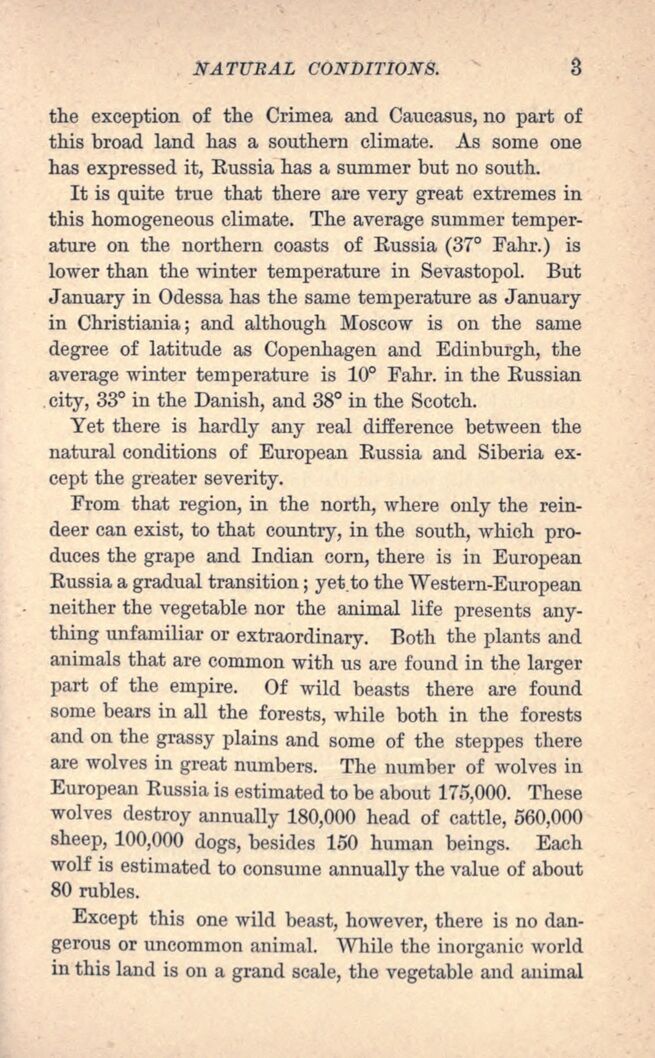
Full resolution (JPEG) - On this page / på denna sida - I

<< prev. page << föreg. sida << >> nästa sida >> next page >>
Below is the raw OCR text
from the above scanned image.
Do you see an error? Proofread the page now!
Här nedan syns maskintolkade texten från faksimilbilden ovan.
Ser du något fel? Korrekturläs sidan nu!
This page has been proofread at least once.
(diff)
(history)
Denna sida har korrekturlästs minst en gång.
(skillnad)
(historik)
the exception of the Crimea and Caucasus, no part of
this broad land has a southern climate. As some one
has expressed it, Russia has a summer but no south.
It is quite true that there are very great extremes in
this homogeneous climate. The average summer
temperature on the northern coasts of Russia (37° Fahr.) is
lower than the winter temperature in Sevastopol. But
January in Odessa has the same temperature as January
in Christiania; and although Moscow is on the same
degree of latitude as Copenhagen and Edinburgh, the
average winter temperature is 10° Fahr. in the Russian
city, 33° in the Danish, and 38° in the Scotch.
Yet there is hardly any real difference between the
natural conditions of European Russia and Siberia
except the greater severity.
From that region, in the north, where only the
reindeer can exist, to that country, in the south, which
produces the grape and Indian corn, there is in European
Russia a gradual transition; yet to the Western-European
neither the vegetable nor the animal life presents
anything unfamiliar or extraordinary. Both the plants and
animals that are common with us are found in the larger
part of the empire. Of wild beasts there are found
some bears in all the forests, while both in the forests
and on the grassy plains and some of the steppes there
are wolves in great numbers. The number of wolves in
European Russia is estimated to be about 175,000. These
wolves destroy annually 180,000 head of cattle, 560,000
sheep, 100,000 dogs, besides 150 human beings. Each
wolf is estimated to consume annually the value of about
80 rubles.
Except this one wild beast, however, there is no
dangerous or uncommon animal. While the inorganic world
in this land is on a grand scale, the vegetable and animal
<< prev. page << föreg. sida << >> nästa sida >> next page >>